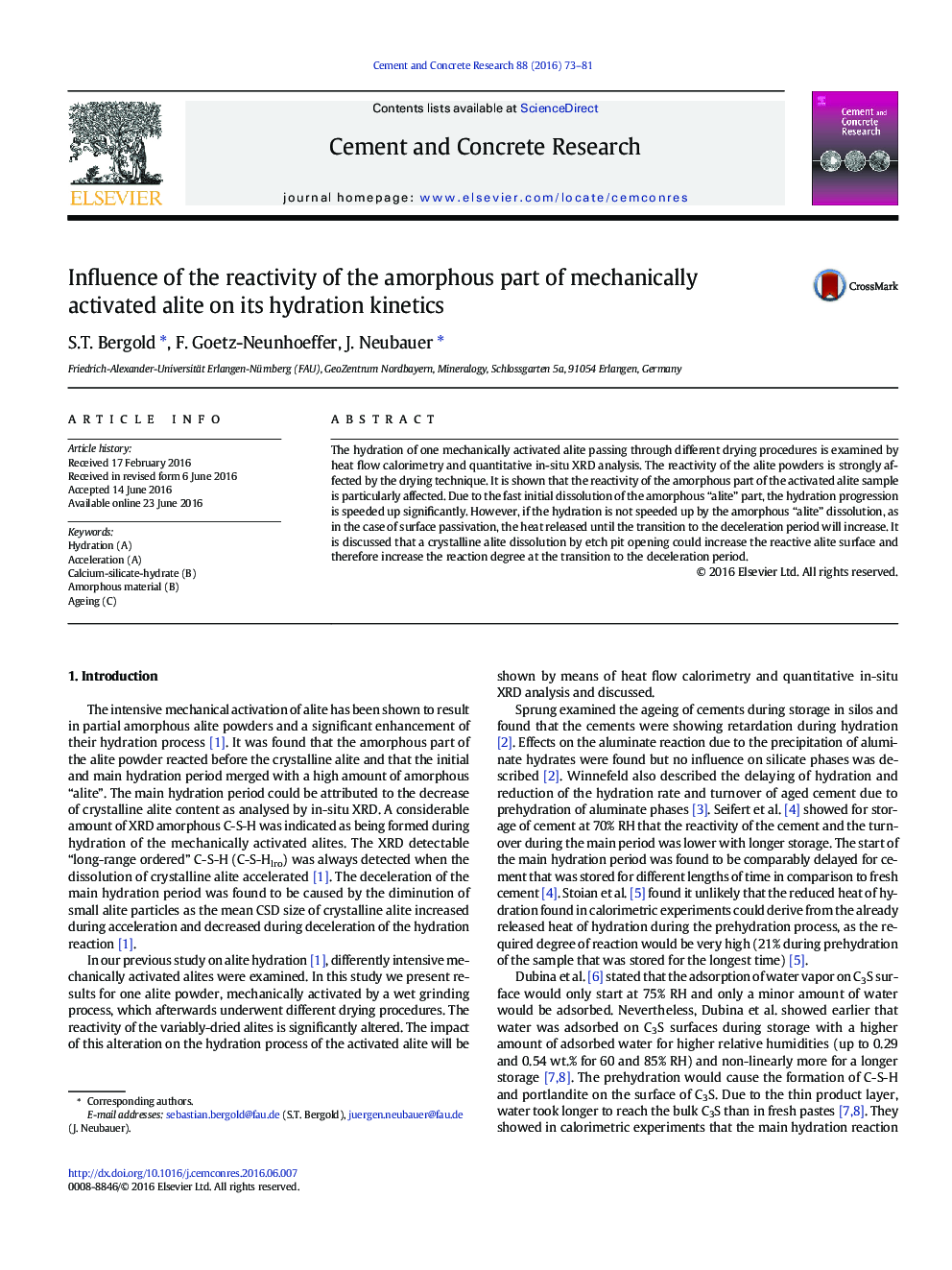| Article ID | Journal | Published Year | Pages | File Type |
|---|---|---|---|---|
| 1455942 | Cement and Concrete Research | 2016 | 9 Pages |
The hydration of one mechanically activated alite passing through different drying procedures is examined by heat flow calorimetry and quantitative in-situ XRD analysis. The reactivity of the alite powders is strongly affected by the drying technique. It is shown that the reactivity of the amorphous part of the activated alite sample is particularly affected. Due to the fast initial dissolution of the amorphous “alite” part, the hydration progression is speeded up significantly. However, if the hydration is not speeded up by the amorphous “alite” dissolution, as in the case of surface passivation, the heat released until the transition to the deceleration period will increase. It is discussed that a crystalline alite dissolution by etch pit opening could increase the reactive alite surface and therefore increase the reaction degree at the transition to the deceleration period.
